Red Shouldered Hawks
Last Sunday, I planned to spend the morning discovering fall migrants–the warblers, orioles, hummingbirds, etc. that birders all over Texas reported daily for the past week. I didn’t have much luck with that plan, though. Instead, Sunday’s story was about larger birds. Red Shouldered Hawks patroled at Little Piney all day. I saw them near the house; I saw them by the lake; on the ground, in a tree– almost every which way I turned. When I didn’t see them I heard their cries.
It took me awhile to make the connection, but I assume the small birds were playing it quiet and safe while the radar eyes of hawks scanned Little Piney for prey. The hawks endured my company until I got too close for hawk comfort. Sometimes they scolded me as they flew off.
Two hawks perched on this tree as I approached. Disturbed, the pair left something white on the short branch to the left. I couldn’t tell exactly what kind of prey they dropped there, but it was gone when I walked by an hour later.
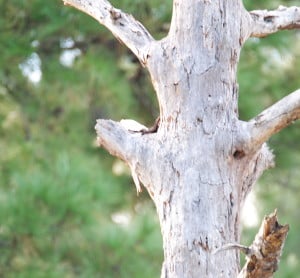
.
This sun-struck Red Shouldered Hawk kept an eye on me by the lake.
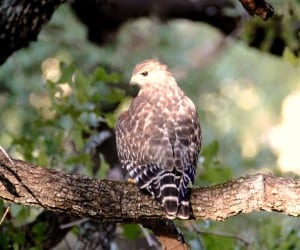
A watchful hunter perched high in the pine canopy.
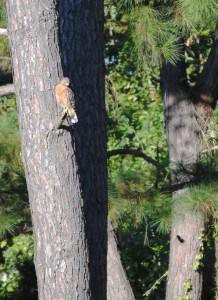
The Great Blue Heron
Earlier in the morning Ken and I launched the canoe with passengers aboard–twenty- month- old Fisher, and his mom, Nissa. As we embarked, blue mist rose off the lake and clung to the shore. Just around the second bend appeared the graceful form of a Great Blue Heron in the haze. He stood still and alert as the canoe slid forward, and I clicked a dozen photos before he flew.
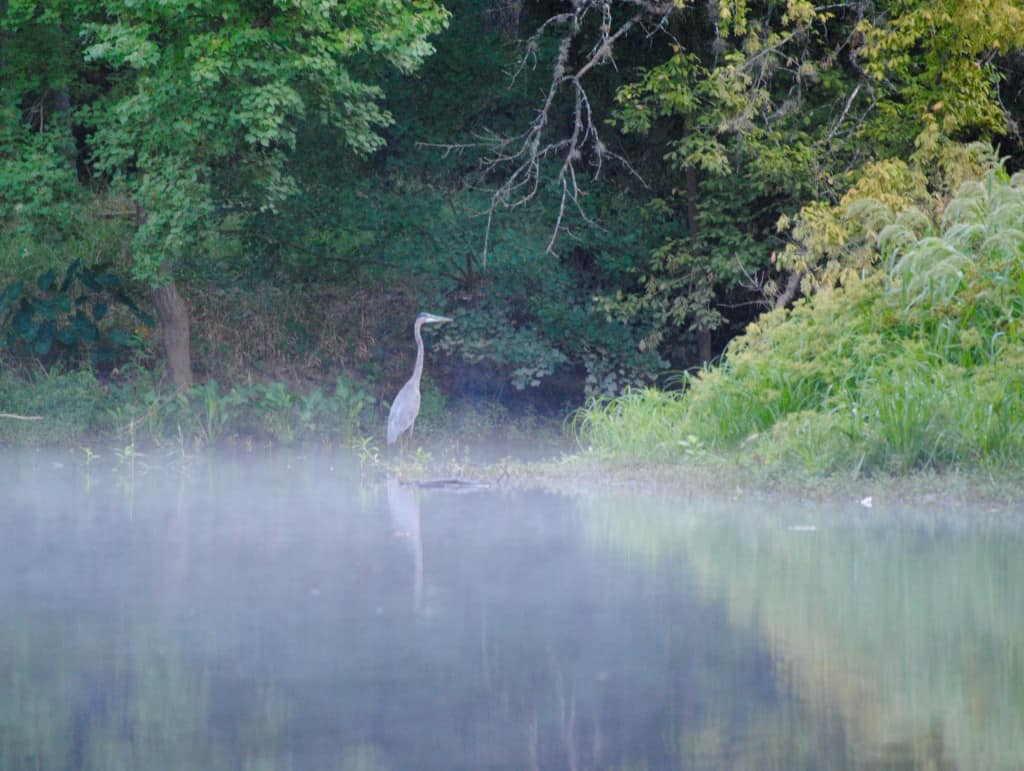
.
Ending a short round trip a half hour later, we found the beautiful bird back at Little Piney in the shallows near the dam. In this lucky photo, he trails water as he lifts into flight. Again he allowed us to admire him for a nice long minute or two before leaving.
Is this the same bird that shared only a startle rear aerial view just four weeks ago, now grown accustomed to us; or has a friendlier heron taken his place? I like to think he’s the same bird, and that he lives with us at Little Piney.
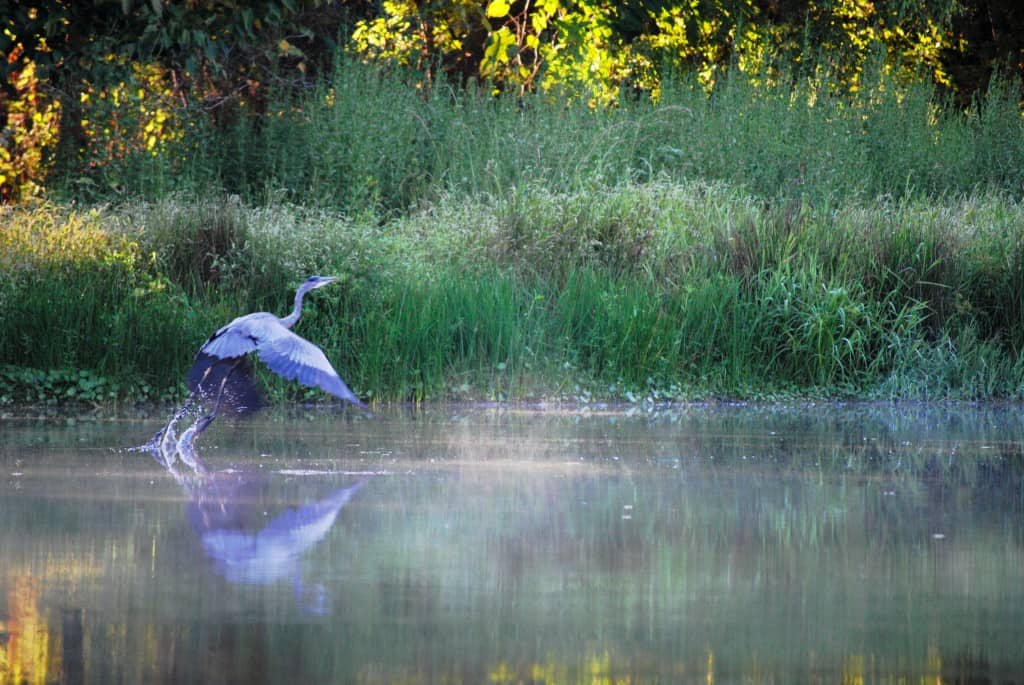
A Spider’s Life
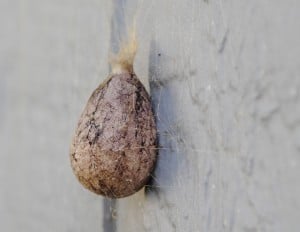
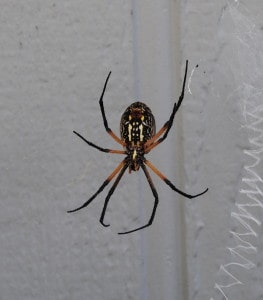
The Black and Yellow Garden Spider, Argiope aurantia, Is a common sight at Little Piney. This lovely weaver has spun a silk egg sac and attached to an outer wall. Sadly, she will die soon now that she has laid her eggs. The young spiders hatch in the fall but remain tucked into the silk sac until they immerse in spring–unless a lizard dines on them of course. The question comes to mind whether we should move the sac of orphaned spiders to a safer place than a bare white wall; then I remember that nature writes her own story. I leave the lovely weaving where it hangs alone as if on a gallery wall.
Update: March 10, and the sac of spider eggs is still hanging on the wall. Mama spider didn’t day wishing a few days, I had expected. She was around a least a few weeks before she vanished.
Hi, I just discovered your blog and I am really enjoying it! As time permits I’ve been reading your older posts. I have to tell you, the picture of the great blue heron in the lake mist is a stunning photo!
I live in the pacific northwest on the southern coast of Washington state near the pacific ocean where things drip with moss. I have also lived in dry country (eastern Montana) and my husband and I have entertained the idea on and off of moving to Texas.
I can tell you are much like me in the sense that you want to share your glorious moments in nature so that others might see it as you have been lucky enough to. You do a really nice job of that. I’ll keep coming back here.
Hi Linda,
I’m so glad that you are enjoying my blog! I appreciate your readership, and I’m thrilled to know that I have a kindred spirit in Washington following Lostpineslife. Thanks for writing:)